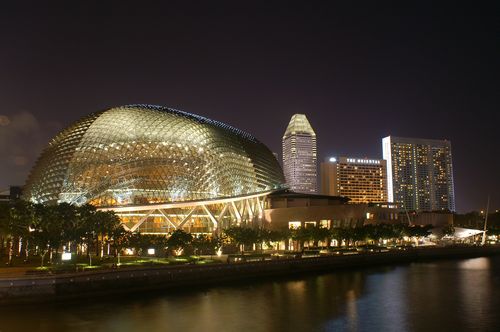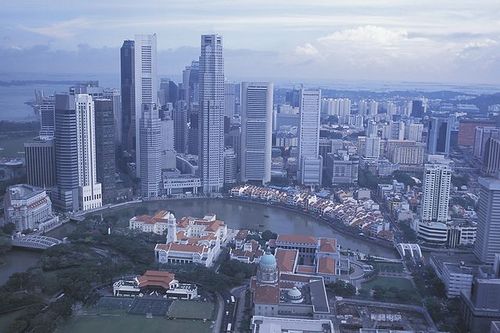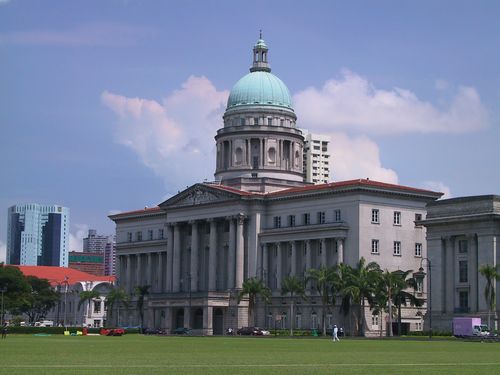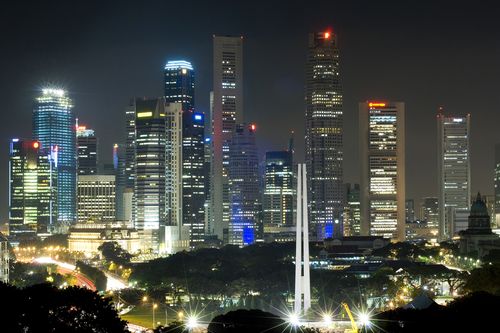|
|
HUnited Overseas Bank Plaza One
(Tallest building in Singapore) |
|
Singapore signifies a bunch of near about sixty small tropical islands just near the Equator in South East Asia. However, this geographical description gets submerged under the excitement and celebration of life that the name Singapore symbolises. It is a vibrant island nation that houses best of both worlds: the oriental Asian traditions and the occidental Western modernism. The colourful and intricate cultural basket of Singapore is woven with electrifying fibres of tantalising entertainment activities. The lion-headed-fish-tailed Merlions welcome tourists all over the land that provides one of the best quality hotels in the world. The accommodation facilities in Singapore is well managed as most of the resident population live in government housing societies while plush hotels and bed and breakfasts sparkle in the heart of the nation. From classical symphonies to Chinese operas, jazz to ballet, Night safari to trip Jurong Bird Park, Theme park of Sentosa Island to the oldest Hindu temple of Sri Mariamman, life is bubbling in Singapore. Get a hold of all these enjoyments while saving on your lodging cost by staying in hostels or taking apartments for rent in Singapore.
Singapore is spread over an area of approximately 697.2 sq km on a diamond shaped island at the southern tip of Malay Peninsula. Out of the several small, adjacent islands only twenty of them are inhabited and among them Jurong Island, Pulau Tekong, Pulau Ubin and Sentosa are some of the significant ones. Malaysia and Indonesia are the northern and southern offshore neighbours of the Singapore. The country is linked with Malaysia through two man-made causeways. The capital of the nation is titled Singapore City. The distinction between the city and nation of Singapore has nearly faded away as every region has been more or less equally urbanised. The terrain of Singapore is basically flat with abundance of rainforests. The northwest is bit hilly in contrast to the flatter eastern regions. However the country has no natural rivers or fresh waters lake. Hence, reservoirs and water catchments are a regular feature in the country. The highest point of Singapore is Bukit Timah at 164 m or 538 feet. Being situated just one degree north of Equator the climate of Singapore can’t be anything but tropical. High humidity and abundant rainfall are the primary features of the climatic conditions.
 Esplanade at night
Esplanade at night
|
Singapore has gone from strength to strength since Sir Stamford Raffles claimed the island as a British trading post in 1819. Prior to that, indigenous Malay, Chinese and some Indian communities inhabited the island. It developed as a major British trading naval base in following decades until the Japanese captured it in 1942. With the end of Second World War the Japanese left and Singapore became a self-governing crown colony in 1959. In 1963, it joined the Federation of Malaysia but left two years later to proclaim its independent Republican identity on August 9, 1965.
Following independence, Singapore has become Southeast Asia's most thriving business and financial centre. It has the world's busiest port, and its famous Changi international airport serves more than 60 major airlines. Singapore lags behind severely in reserves of natural resources but the country compensates the deficit with high level of export earnings that contributes to 90% of the GDP.
Singapore has a parliamentary form of government with a popularly elected president as head of the state and a prime minister as head of the government. The codified Constitution of Singapore is the supreme law of the land. Out of the 94 members of the unicameral parliament, 84 of them are elected by popular vote to serve five-year terms.
 Central Business District
Central Business District
|
 Supreme Court
Supreme Court
|
 Central business district at night
Central business district at night
|
|
|

